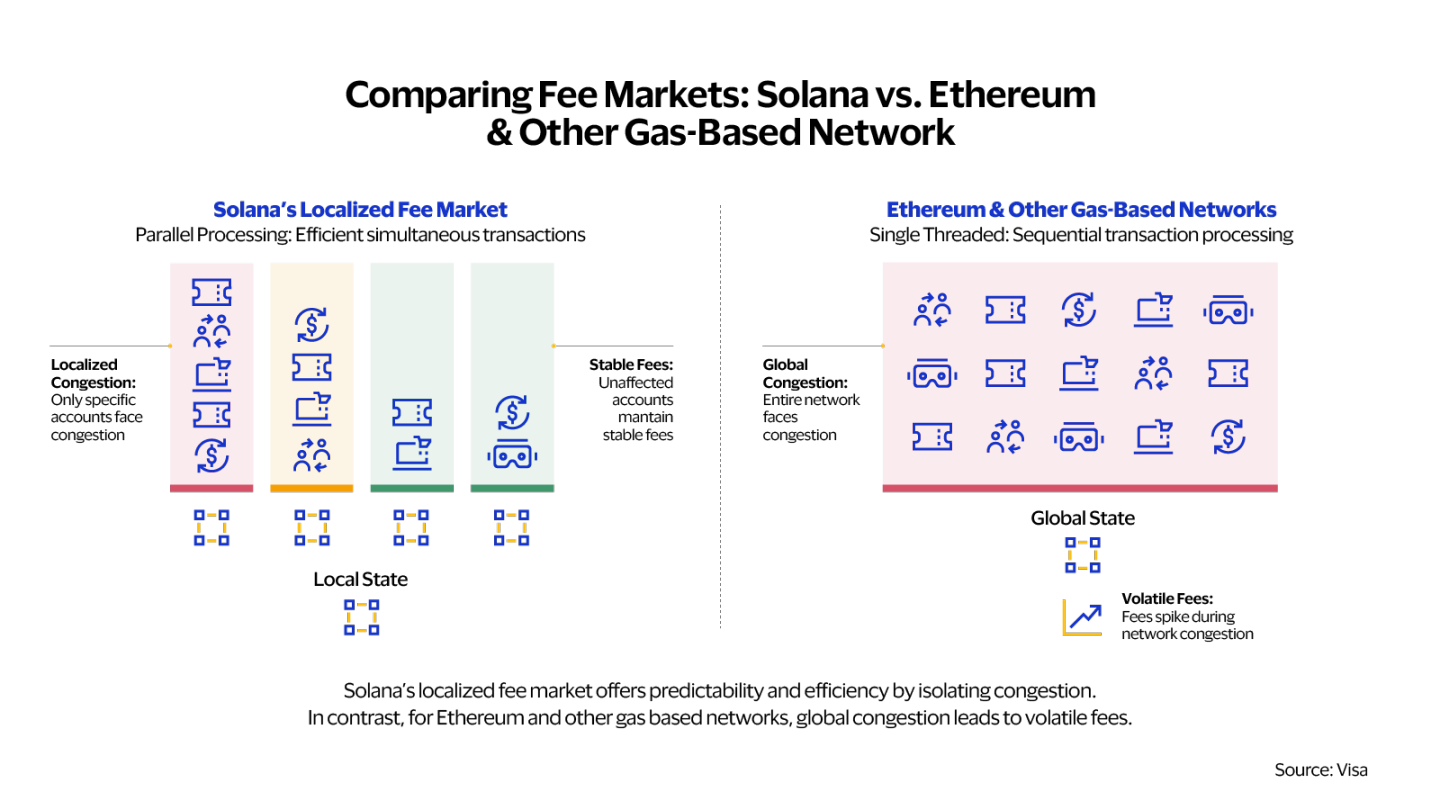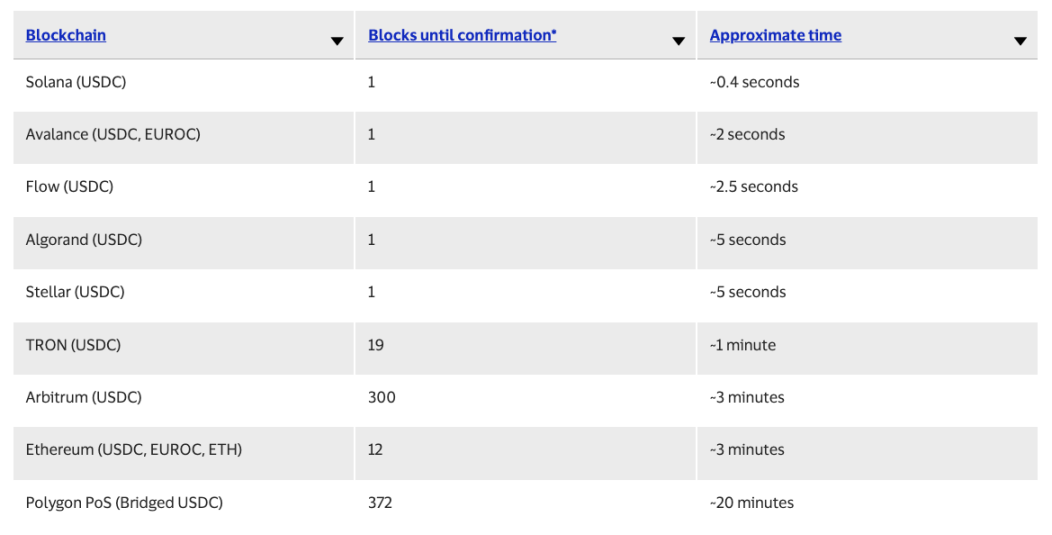Authors: Mustafa Bedawala, Arjuna Wijeyekoon
Translation: Babywhale, Foresight News
Blockchain networks have long been considered as innovative payment infrastructure. Over the years, they have been striving to scale to support the secure, high throughput, and low-cost transactions required by payment companies and expected by consumers. In the past year, the Visa team has been closely monitoring the technological innovations behind blockchain scalability and is pleased with the significant progress made on Layer 2 networks built on Ethereum and alternative blockchain networks. Our goal is to gain a deep understanding of the technical characteristics of blockchain networks and to explore how they can be leveraged to enhance our existing network and build new products for commercial and financial flows.
While we believe that multiple blockchain networks may emerge in the payment ecosystem, we see Solana as having the potential to become one of the driving networks for mainstream payment flows. With its high speed, scalability, and low transaction costs, Solana has a promising future in payments, making it an ideal candidate for efficient blockchain settlement networks using stablecoins like USDC. Solana includes many key features and novel innovations that are worth exploring for anyone interested in payment technology.
- Can El Salvador, which embraces Bitcoin, replicate Singapore’s path to success?
- Friend.tech Deep Report Analyzing various indicators, why can the valuation reach $1.5 billion?
- RWA and Multi-Chain, the New Growth Points of Pendle
Visa-scale Transaction Throughput
As a global payment network, Visa is capable of processing over 65,000 transactions per second. While Solana has yet to reach Visa’s processing efficiency, it can handle an average of 400 user-generated transactions per second (TPS), which can increase to 2,000 TPS during peak demand, allowing for testing and piloting of payment use cases. In comparison, Ethereum has an average TPS of 12, while Bitcoin has 7.
Parallel Transaction Processing: Solana’s high throughput design allows for parallel transaction processing, significantly improving network efficiency. Transactions from different independent accounts can be executed simultaneously, enabling Solana to effectively support payment and settlement scenarios where transactions primarily occur between two different parties or involve one party making payments to multiple parties.
In Solana, smart contracts can also be executed in parallel. Transactions specify the states or accounts they interact with, allowing validators to run non-conflicting transactions concurrently. Unlike other chains like Ethereum that use a single-threaded model, Solana employs a multi-threaded approach to achieve parallel transaction execution. In short, Solana’s architecture allows for concurrent processing of multiple transactions, helping to prevent congestion in one part of the network from impacting overall network performance.
Low and Predictable Transaction Costs, Enhancing Payment Efficiency
In terms of costs, Solana’s transaction fees are not only low (typically below $0.001), but also predictable. This predictable low cost makes it a network that can explore efficiency and cost savings for existing payment businesses. In Figure 1 below, Solana has a clear advantage in cost compared to Bitcoin and Ethereum, the fees of which may fluctuate unpredictably based on transaction demand on the network. For payment companies, a network with unpredictable transaction costs can make it difficult to manage costs in their products and potentially result in a poor consumer experience.
Figure 1: Transaction fees denominated in US dollars
Cost predictability achieved through localized fee markets: Solana’s localized fee market is unique in the blockchain space. This innovation is closely related to Solana’s parallel processing capabilities, where non-overlapping transactions are executed on separate threads, similar to vehicles driving on separate roads. Network congestion is a significant reason for fee increases in other blockchain networks and can have negative implications for the entire system. The popularity of NFTs can lead to network congestion, making consumer P2P transactions that could occur simultaneously more expensive and economically inefficient.
Figure 2: Comparison of Solana's fee mechanism with Ethereum and other blockchain networks
Solana’s mechanism ensures that transaction congestion in one account does not affect transactions in other accounts. If an account experiences high demand for a specific asset (e.g., NFTs), only the fees for that specific account will increase, while fees for other accounts remain unaffected. This creates a fee market based on use case demand, where transaction costs temporarily rise when there is high demand for a specific asset, but the fees for other transactions on the chain are not impacted. By allowing the parallel execution of computations with different states, Solana can create a fee market based on “state competition” instead of having a single global fee market.
User Expectations for Transaction Finality
Transaction finality measures the speed at which users expect their actions to be confirmed on a blockchain network. For payments, transaction confirmation time is equally important as network throughput. For example, Ethereum has an average TPS of around 12; however, due to gas limits during congestion and smart contract requirements, users may experience several minutes of waiting time before a transaction is confirmed. Solana’s target slot time is 400 milliseconds, but the actual range can be between 500 to 600 milliseconds.
The majority of applications on Solana use “optimistic confirmation” to determine their final outcome. This is a mechanism used by Solana that achieves finality without waiting for all validators to vote on a block. In this case, if validators representing more than two-thirds of the delegated stake have voted on a block and no optimistic confirmation block has been rolled back or failed to finalize, that block can be considered finalized. This mechanism allows Solana to achieve final confirmation in a much shorter time than many other blockchains. Fast transaction finality can lead to a better payment experience. In comparison, Bitcoin transactions require waiting for 6 block confirmations, which can take up to an hour.
Table 1: Number of block confirmations and time required for different blockchain confirmations
Availability: Numerous nodes and multiple validator clients
For a payment network to be effective, it must be able to initiate and execute transactions consistently whenever a user needs to make a payment. In the case of a blockchain network, availability is best measured by the number of independent participants or nodes that collectively support the network for users to initiate transactions. As of July 2023, the Solana network boasts an impressive 1893 active validators, which are entities responsible for block production and voting. Additionally, there are 925 RPC nodes that maintain local transaction records, although they themselves may not create blocks. The abundance of nodes in a blockchain network enhances its resilience and redundancy. As long as a sufficient number of nodes remain operational, the network can continue to function without losing data even if some nodes encounter issues or go offline. The Solana community also emphasizes the diversity of node geographical locations and infrastructure providers to make the network more robust in responding to events such as natural disasters or changes in service provider access policies. The Solana network has nodes in over 40 different countries/regions, as well as hundreds of independent hosting providers and diverse geographical locations. This diversity helps ensure smooth and reliable operation even in the face of technical challenges.
Validator clients are software tools that allow node operators to act as validators on a PoS blockchain. The diversity of validator clients enhances the network’s resilience. While one client may have errors or vulnerabilities, another client may not, reducing the likelihood of a single software defect causing network paralysis. Solana initially relied on the validator client introduced by Solana Labs. In August 2022, Jito Labs launched the second validator client, Jito-Solana. Shortly after, Jump Crypto also introduced Firedancer (in the testing phase), an independent C++ validator client.
Firedancer stands out for its potential to bring significant performance improvements, as demonstrated by its live showcase achieving 600k TPS. The purpose of having different validator clients is to maintain network stability. Apart from Ethereum, Solana is one of the few blockchains that have multiple completely independent validator clients.
Meeting the demands of the times
Solana’s unique technological advantages, including parallel processing with high throughput, low-cost localized fee markets, and the high elasticity of numerous nodes and multiple validator clients, together create a scalable blockchain platform with a credible value proposition for payment. These are some of the reasons we have decided to expand the pilot scope of stablecoin settlement to include transactions on the Solana network. As we pilot stablecoin settlement on Solana, we plan to test whether Solana has the capability to meet the needs of modern enterprise financial operations.
Like what you're reading? Subscribe to our top stories.
We will continue to update Gambling Chain; if you have any questions or suggestions, please contact us!


